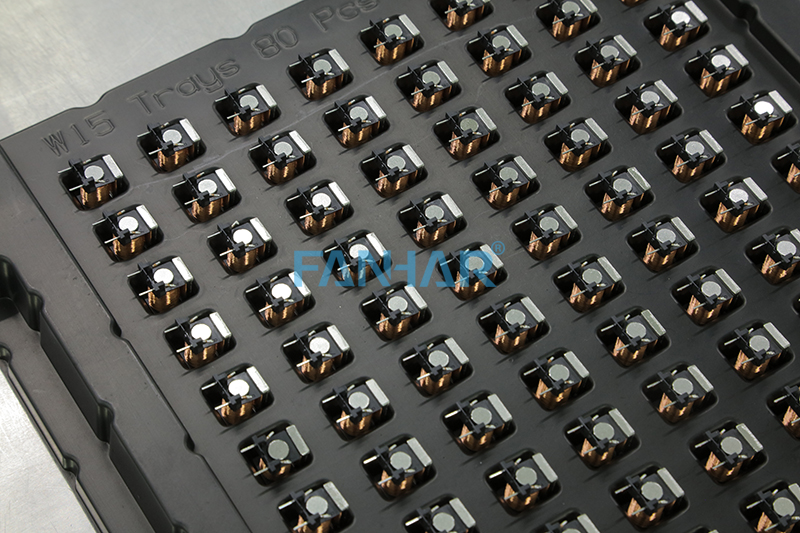Power relays are categorized by mechanical features – miniature, PCB and industrial relays
Views: 3406 Author: Fanhar Relay Time: 2021.07.27
While miniature power relays are small this term does not always indicate absolute size, PCB power relays are designed to mount onto printed circuit boards (PCBs). Industrial relays are typically used in switching cabinets by control panel builders. Industrial relays are engineered to meet industry expectations such as Underwriters Laboratory (UL).
The basic design of electromechanical power relays is the same, regardless of whether it is a miniature PCB relay or an industrial power relay. Power relays have three subsystems: contact system, magnetic system, and mechanical components. The primary components in a power relay include – on the contact system, or secondary side – fixed contacts, moving contacts (moved by the magnetic system – the motor – to switch the load circuit), and contact springs (holding the contacts but flexible enough to all the contacts to move).

The magnetic system includes the coil (generates the necessary magnetic field to actuate the armature and contacts), the core, the yoke (establishes the magnetic circuit), the armature (the moving part that closes and opens the magnetic circuit and acts – via a comb or actuator – on the moving relay contacts), and the return spring (establishes the defined position of the magnetic and contact system in case the coil is not energized). The mechanical components include the case, base, insulation (separates the primary circuit from the secondary side and provides required insulation), actuator (can translate motion of magnetic system to the moving contacts), pins or terminals (connects the contact system and the load), and mounting devices.
